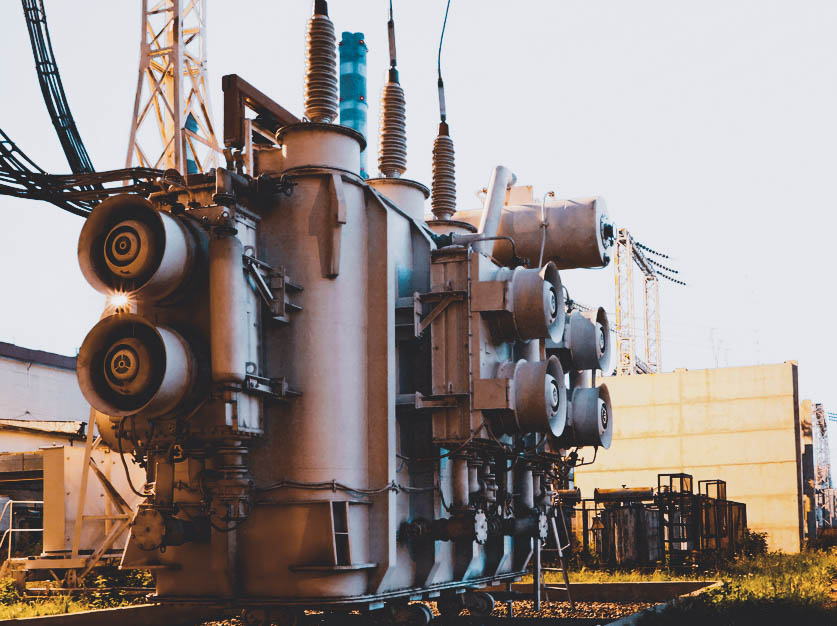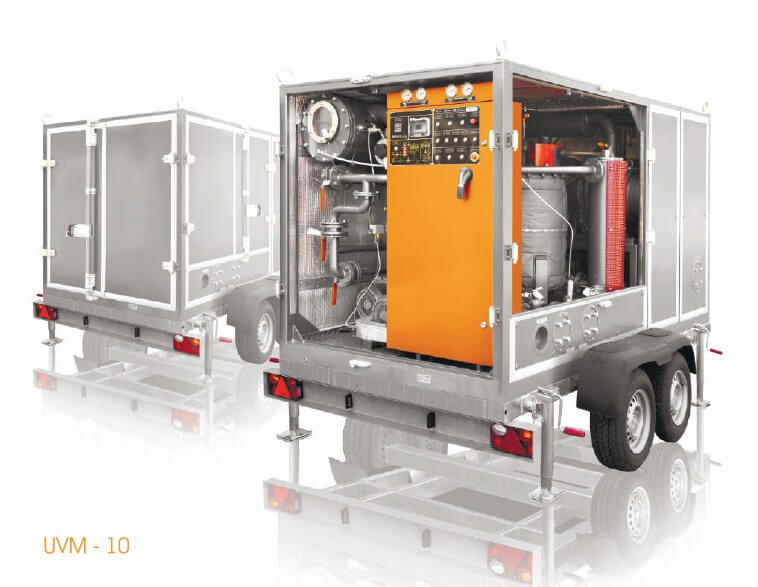Contaminated Transformer Oil Purification Methods
Transformer oil becomes contaminated and oxidized during use or long term storage. Small particles of transformer construction materials, as well as solved water and gas reduce the dielectric strength of the oil. Continued use of such product in the electrical equipment, failures are unavoidable. Therefore, many facilities protect their transformer using degassing equipment.
Until recently, oil was processed in stages by several different types of equipment to remove solid particles, moisture and gas. Introduction of modern comprehensive processing systems greatly simplified the process.
Dielectric Strength
Presence of various contaminants significantly reduces the dielectric strength of transformer insulation. The sparks in the electrical equipment may cause ignition and fire in the electrical equipment.
The dielectric strength of clean oil is quite high, in the range of 60 kV and higher. If gas bubbles form in the dielectric, its dielectric properties decrease and it conducts electric current, causing failures.
Quality Control
The power of transformers tends to increase with time, hence the increased requirements to the purity of oil used in the equipment.
Oil-filled equipment manufacturers specify the requirements for servicing quality. A mandatory requirement is scheduled purification of oil.
Many operators of power transformers are interested to increase the quality of transformer and other electrical equipment servicing.
The problem can be addressed by commissioning of degassing equipment to process oil on site, without the need to disconnect load from transformers.
Manufacturers introduced specifications and regulations for the quality of insulation fluids used in their equipment. The regulatory documents contain information on the maximum allowed amounts of contaminants in the oil.
Solubility of Gases in the Oil
Normally, the oil absorbs gases. The solubility ratio or Bunsen coefficient is used to determine the solubility of gas in oil. This is equal to the volume of gas in a unit of oil volume.
The volumetric percentage of gas solved in transformer oil may reach:
- air – 9,4 %;
- oxygen – 16%;
- carbon dioxide – 120 %;
- carbon monoxide – 9%.
It is notable that the higher the solubility of hydrocarbon gases when the oil is heated, the less lower is the solubility. Carbon dioxide solubility also decreases when oil is heated. Nitrorgen and oxygen are much less influenced by temperature and solve slower.
There is a variety of methods to determine the amount of gas in the oil. Chromatography is one of them. Manometric methods of various kinds can also be used.
The simplest method to determine the amount of air or another gas in the oil is high vacuum degassing. The oil is stirred and agitated in the process.
Causes of Failures of Transformers and Other Power Systems
Power equipment, such as compressors, hydraulic presses, turbines, heat exchangers, fails occasionally. These failures may be caused by overloads or operator errors. Another common cause is component malfunction, and accumulation of contaminants, such as particles, moisture and gas in the oil.
Power equipment is often expensive and requires careful maintenance. Transformer oil, which may come from many manufacturers, should be prepared and even before use.
While many transformer oil servicing equipment manufacturers emphasize dehydration of the oil, GlobeCore has designed and started production of comprehensive systems which remove all contaminants from the oil simultaneously.
The CMM degassing equipment by GlobeCore performs full purification of to remove solid particles, moisture and air. These units are highly efficient, since even one cycle of oil through the unit often makes used oil suitable for reuse.
CMM Degassing Equipment Operating Principles
The CMM type units by GlobeCore employ vacuum processing of oil with fine filtration. The output oil has the following parameters:
- Moisture content – 5 ppm;
- Nominal filtration – 5 μm or better;
- Gas content – vol. 0.1%;
- Dielectric strength – 70 kV.
Note, that the above is true for the following initial condition of oil:
- Gas content – vol. 10.5% or better;
- Moisture content – 100 μm or better;
- Temperature – above 0ºС.
Depending on the desired result, GlobeCore equipment can operate in one of the three modes:
- Heating of equipment with hot oil;
- Oil degassing and purification;
- Transformer vacuum evacuation.
GlobeCore Degassing Equipment Advantages
Degassing of transformer oil with the specialized CMM type degassers has offers the following advantages:
- Zero waste generated in the process;
- Compact units;
- Mobility;
- Simple controls and servicing;
- Oil foaming control;
- Equipped with GSM-modules for remote operation control;
- High quality purification even after one cycle of processing;
- Low power consumption;
- Low noise.
The CMM units are produced in basic configuration which can be extended with custom selected options. Some of the options offered by GlobeCore for the degassing equipment are:
- Auxiliary vacuum system;
- Oil moisture meters;
- Flow meters;
- Monitoring of oil level in the transformer for improved safety.
The company also offers on site commissioning assistance by our expert engineers, GlobeCore units can be delivered anywhere in the world.






